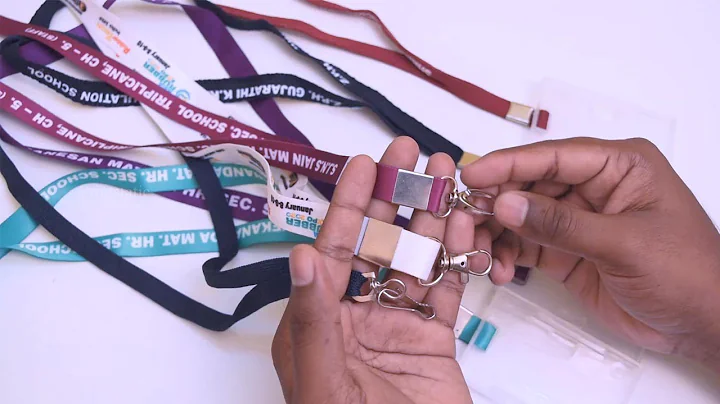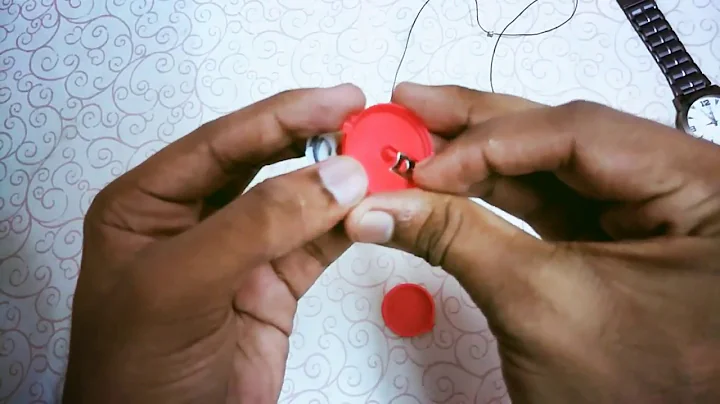In modern society today, one of the things we must bring with us is the "ID card". It can be said that from the day we were born, an ID card number is bound for life. If you take a high-speed train or an airplane, you need an ID card. You need an ID card to live in a hotel or hotel, an ID card for credit cards and loans, and an ID card even to find a job. A small ID card connects all of us to an invisible skynet. Live and work! The ID card system can be said to be an advanced symbol of modern civilization, and it has played a great role in social management! So was there an ID card in ancient times? If so, what does it look like? Today Li Fuzi will talk to you about this topic!

Modern ID card
The origin of ID card
Is there an ID card in ancient times? It can be said for sure that there are, so when did ancient China have ID cards? What does it look like? According to research, many scholars in later generations generally believed that China's ID card system should have started in the Sui and Tang Dynasties! At that time, the court issued an identity certificate to every official "鱼符" ! In fact, as long as it is an object that can prove personal identification information, it can be counted as an ID card. From this point of view, there were already ID cards in China before the Sui and Tang Dynasties.

Ancient ID card "fish symbol"
ID card in the Sui and Tang Dynasty
However, the ID card in ancient China is completely different from the modern one, and there is no uniformity. There are many, including temporary ID cards, professional ID cards, grade ID cards, etc. Among them, grade ID cards are the most common. The fish symbol that appeared in the Sui and Tang Dynasties is the most typical grade ID card. is recorded in "New Tangshu·Car Service History": "Those who possess fish charms are called to be high and low." In ancient times, a grade ID card has a variety of styles, except for fish charms. In addition, there are tiger symbols, free symbols, fish symbols, turtle symbols, dragon symbols, Linfu, tooth cards, waist cards, etc. Among them, the "fish symbol" is the most representative and the most commonly used, and the use time is also the most old. The official use of fish charm to verify identity began in the Tang Dynasty, and the Sui Dynasty before the Tang Dynasty used the "Bamboo Messenger". This is a letter charm invented in the Han Dynasty and made of bamboo.

Fish symbol is a status symbol
Han Dynasty soldiers must have "Bronze Tiger Symbols", and the rest of the enlistment uses "Bamboo Ensigns", "Han Shu" "Du Shi Zhuan" records: "The old system sends troops, all use the talisman, the rest are levied, the bamboo envoy." After the establishment of Li Tang, Tang Gaozu Li Yuan invented the "fish symbol" based on the old system of the Sui Dynasty "In the system, the "Bamboo Messenger" was changed to "Silver Rabbit" at first, and later changed to "Bronze Fish". There are two types of "Jiaoyu" and "Xunyu".
When Wu Zetian was in power, the "fish symbol" was once abolished and the "turtle symbol" was set. Although the form has changed, the function as an identity certificate is still the same. Usually the "fish symbol" is divided into two halves. The left half of the fish symbol is stored in the court as the stub of the ID card; the right half of the fish symbol is kept by the holder for identity use. The left and right symbols are not matched one by one, and their numbers are not necessarily equal. This is controlled according to the number of users and actual needs.

龟符
When the fish symbol was established, it was not used to indicate identity, but a proof of power. The holder of the fish symbol had to mobilize the army and The power of appointing and dismissing officials can be said to be very powerful. In the Tang Dynasty, it was also stipulated that the materials of fish charms held by people of different levels were also different. The material used by the princes and officials of the third rank and above to make the fish charm is gold, the materials used by the officials of the fifth rank and above are silver, and the officials below the sixth rank use copper. In Tang Gaozong’s time, a bag of corresponding grade was given to the fish symbol, called "fish bag", which was specially used to hold the fish symbol. The fish bag also used different decorations according to the level of officials. In the period of Tang Zhongzong, it was changed to use gold for those wearing purple clothes and silver for those wearing red clothes.

Officials carry fish bags with them
In the Tang Dynasty, not only officials had ID cards, but even the crown princes also had ID cards. It’s just that it’s not a fish charm, but a kind of name. The jade ID card is "玉契". For example, one day the emperor went out on a microservice and left the prince to sit in the capital to supervise the country. The emperor would give "龙符" to prove his supervision. The legal status of the country. Of course, if the prince or minister of the court stays behind in the capital, the emperor will also grant "麟符" to prove that he has the power to deal with government affairs as an agent.

龙符麟符
The entire Tang Dynasty attached great importance to the promotion of the ID card system, not only in the Tang Dynasty, but also envoys of the vassal states such as Koguryo and Annan. Datang also issued them the "Fan Country Talisman" to prove their identity. The Fan Country Talisman is distinguished by male and female. The Tang Dynasty will keep the male Talisman in the court, and the female Talisman will be brought back by the envoys to use as an ID card! If the envoys go to the Tang Dynasty next time, they must match the male and female to distinguish the true from the false.
The "tooth card" of Ming Dynasty ID card
If the Tang Dynasty is far away from us, we are not familiar with the Tang Dynasty fish charm, so Ming and Qing The ID card of the period is relatively familiar. In modern archaeology, the ID card "tooth card" or "waist card" from the Ming and Qing dynasties is often found. The tooth card is also one of the grade ID cards. It looks like a thin piece. According to the material, the tooth card in the Ming Dynasty can be divided into ivory tooth card, animal bone tooth card, metal tooth card, wooden tooth card, etc. It is distinguished by the difference of the holder's identity and the different use function. In the Ming Dynasty, dental cards were relatively advanced. Usually, the user’s work unit and position are marked on the dental cards, along with warnings, which are generally aimed at people who fraudulently use or do not use ID cards.

Ming Dynasty’s tooth card
The "waist card" of the Qing Dynasty ID card
The Qing Dynasty ID card is uniformly called the "waist card", which is one This kind of ID card has more comprehensive and complex information. Each waistband will indicate the purpose of the ID card. Not only the name, age, unit, official title, job title, etc. of the holder must be indicated, but also in some waistbands with higher security requirements. The card will even be engraved with the facial features of the holder, and the personal features are recorded on the waist card. This can be said to be a very advanced means of identification at the time. There was definitely no cosmetic surgery in ancient times, so facial information is often the same as modern fingerprint information, which can be said to be unique. It is very difficult to impersonate unless you know how to disguise.

Qing Dynasty’s waist card
Qing Dynasty ID card "green head card"
In addition to the waist card, the Qing Dynasty also There is a more distinctive ID card, is called "Green Head Card"! This is the exclusive ID card of the concubine of the Qing Dynasty. Painted green on the top of the brand, so it is also called "Green Head Card". I don't know what I thought. If the color is not painted, I have to paint green! The green head card is very important to the concubine of the harem. If you don't have this ID card, then you will never see Tianyan no matter how beautiful you are. In the Qing Dynasty system, the emperor’s private life was strictly controlled, and concubines were never allowed to stay overnight in the emperor’s residence. If the emperor needs his concubine to accompany him at night, the eunuch in the Jingshi Room will put the green head cards of each concubine on a silver plate after dinner, and then hold the silver plate to the emperor’s face, and the emperor himself Choose, if the emperor chooses which concubine, she will turn over her green card. is commonly known as "Flip Brand". In the evening, the eunuch will carry the concubine selected by the emperor on the emperor’s dragon bed, and wait until she finishes serving the emperor, then carry her back to her residence.

The green head card for the exclusive court concubine
LiMaster said that ID
Compared with grade ID cards in ancient times, the issuance and use of professional ID cards and temporary ID cards are also very common and convenient. Occupational ID cards are issued according to the different occupations that individuals are engaged in. For example, monks use the precepts and degrees, and brothel women also have special waist cards. It can be said that the ancient occupation ID cards are more like work cards commonly used by modern people. , Has a legal effect. However, the ancient identity certificate is not an ID card in our modern sense. If we have to compare it with today’s ID card, then Li Fuzi thinks it should be the ancient household registration system. In modern times, we use the ID card system to manage people and population. In ancient times, the people were managed through the household registration system, and the so-called fish charms, waist cards, tooth cards, etc., were more of a profession representing you!





















